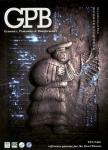DNA Barcode ITS Effectively Distinguishes the Medicinal Plant Boerhavia diffusa from Its Adulterants
DNA Barcode ITS Effectively Distinguishes the Medicinal Plant Boerhavia diffusa from Its Adulterants作者机构:Plant Genetic Engineering Laboratory Department of Biotechnology Bharathiar University Department of Botany Bharathiar University
出 版 物:《Genomics, Proteomics & Bioinformatics》 (基因组蛋白质组与生物信息学报(英文版))
年 卷 期:2012年第10卷第6期
页 面:364-367页
核心收录:
学科分类:0710[理学-生物学] 1008[医学-中药学(可授医学、理学学位)] 1001[医学-基础医学(可授医学、理学学位)] 0714[理学-统计学(可授理学、经济学学位)] 0703[理学-化学] 0701[理学-数学] 0812[工学-计算机科学与技术(可授工学、理学学位)] 10[医学]
基 金:the financial support from UGC (Grant No. 34-272/2008(SR))
主 题:Adulterant Boerhavia diffusa ITS DNA barcoding Punarnava
摘 要:Boerhavia diffusa (B. diffusa), also known as Punarnava, is an indigenous plant in India and an important component in traditional Indian medicine. The accurate identification and collection of this medicinal herb is vital to enhance the drug's efficacy and biosafety. In this study, a DNA barcoding technique has been applied to identify and distinguish B. diffusa from its closely-related species. The phylogenetic analysis was carried out for the four species of Boerhavia using barcode candidates including nuclear ribosomal DNA regions ITS, ITS1, ITS2 and the chloroplast plastid gene psbA-trnH. Sequence alignment revealed 26% polymorphic sites in ITS, 30% in ITS1, 16% in ITS2 and 6% in psbA-trnH, respectively. Additionally, a phylogenetic tree was constructed for 15 species using ITS sequences which clearly distinguished B. diffusa from the other species. The ITS1 demonstrates a higher transition/transversion ratio, percentage of variation and pairwise distance which differentiate B. diffusa from other species of Boerhavia. Our study revealed that 1TS and ITS1 could be used as potential candidate regions for identifying B. diffusa and for authenticating its herbal products.



